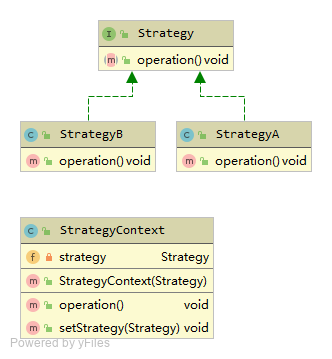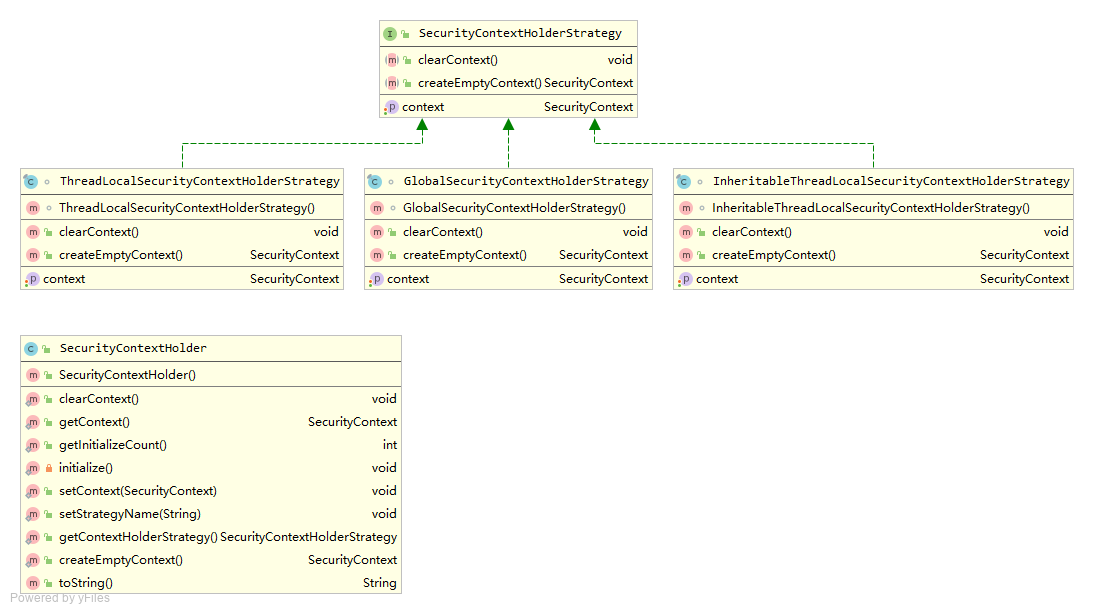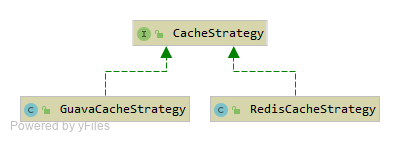定义
策略模式定义了算法簇,分别封装起来,让它们之间可以相互替换,此模式让算法的变化独立于使用算法的客户。
角色
- 抽象策略类(Strategy):定义了一个公共接口,各种不同的算法以不同的方式实现这个接口。Context使用这个接口调用不同的算法,一般使用接口或抽象类实现。
- 具体策略类(Concrete Strategy):实现了Strategy定义的接口,提供具体的算法实现。
- 应用场景(Context):内部维护一个Strategy的实例,负责动态设置运行时Strategy具体的实现算法。
类图

实现
1
2
3
4
5
6
7
8
9
10
11
12
13
14
15
16
17
18
19
20
21
22
23
24
25
26
27
28
29
30
31
32
33
34
| public interface Strategy {
void operation();
}
public class StrategyA implements Strategy {
public void operation() {
System.out.println("strategy A");
}
}
public class StrategyB implements Strategy {
public void operation() {
System.out.println("strategy B");
}
}
public class StrategyContext {
private Strategy strategy;
public StrategyContext(Strategy strategy) {
this.strategy = strategy;
}
public void operation() {
strategy.operation();
}
public void setStrategy(Strategy strategy) {
this.strategy = strategy;
}
}
|
优缺点
优点
- 算法可以自由切换
- 避免适用多重条件判断
- 扩展性良好
缺点
适用场景
- 一个系统需要动态地在集中算法中选择一种
- 如果一个对象有很多的行为,如果不用恰当的模式,这些行为就只好适用多重条件选择语句来实现
- 如果在一个系统里面有许多类,它们之间的区别仅在于它们的行为,那么是策略模式可以动态地让一个对象在许多行为中选择一种行为。
模式应用

实际应用





